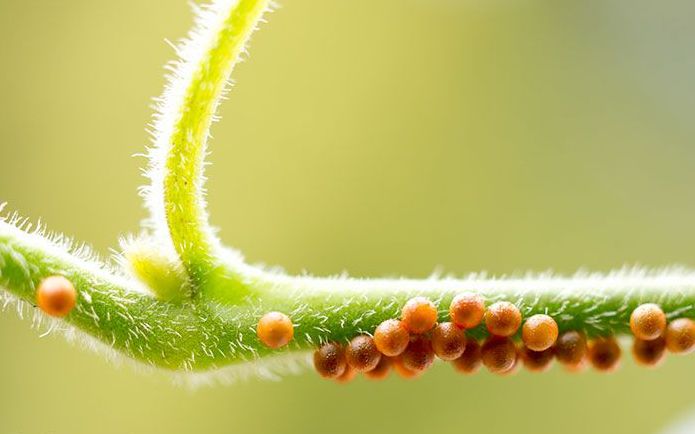|
|
Blue Pipevine Swallowtail Butterfly
|
Males patrol for females in suitable habitats. Females will lay clusters of one to twenty reddish-brown eggs on the underside of host plant leaves. Young caterpillars are gregarious, while older larvae are solitary. The caterpillars will eat the leaves, stems, and seed capsules of the host plant. The larvae are either black or smoky red. Many fleshy filaments project from the sides of the body, the longest being on the anterior end. Over the dorsal part of the body are two rows of orange-red warts. The chrysalis is brown or green, with two horns on the head, a point on the thorax, and a ridge on each side of the abdomen. The abdomen is often patched with yellow. The chrysalis hibernates in areas with cold winters.
• Host plants
Host plants for the caterpillars include the Pipevine (Aristolochia species), including Dutchman's pipe (A. californica), Virginia snake root (A. serpentaria) and others. Pipevines confer a poisonous quality to the larvae and resulting adults, much as the Monarch butterfly obtains protection by feeding on milkweed, or heliconiines by feeding on passion flowers.
|
|









